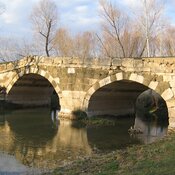Es gibt noch keine deutschsprachige Anmerkungen. Präsentiert wirden Anmerkungen auf English.
Alishar Hüyük was occupied from the Chalcolithic Period, through the Bronze Age and the Hittites, and into Phrygian times. In the 12th century BC, the mound was the site of a Phrygian fortress,
See:
- W. M. Krogman, H. H. Von der Osten,The Alishar Hüyük Seasons of 1930-1932, Part III ... Researches in Anatolia IX - https://oi.uchicago.edu/sites/oi.uchicago.edu/files/uploads/shared/docs/oip30.pdf
- Ronald L. Gorny, Hittite Imperialism and Anti-Imperial Resistance As Viewed from Alișar Höyük - Bulletin of the American Schools of Oriental Research No. 299/300, The Archaeology of Empire in Ancient Anatolia (Aug. - Nov., 1995), pp. 65-89-http://www.jstor.org/stable/1357346?seq=4
- Ankuwa, in: Bryce T., The Routledge Handbook of the Peoples and Places of Ancient Western Asia, Routledge 2013, p. 45-46.
- Maciej Popko: Zippalanda and Ankuwa once more. Journal of the American Oriental Society 120/3, 2000, p. 445-448.
- Ankuwa in: Gojko Barjamovic, A Historical Geography of Anatolia in the Old Assyrian Colony Period, Museum Tusculanum Press, 2011, p.312nn
- Baptiste Vergnaud, A Phrygian Identity in Fortifications?, in: Soma 2012, Identity and Connectivity Proceedings of the 16th Symposium on Mediterranean Archaeology, Florence, Italy, 1–3 March 2012, BAR international series, 2581., Oxford, Archaeopress, 2013, p. 233-241
- Hans Henning von der Osten, The Alishar Hüyük Seasons of 1930-1932 , Part III, The University of Chicago Press, 1937

